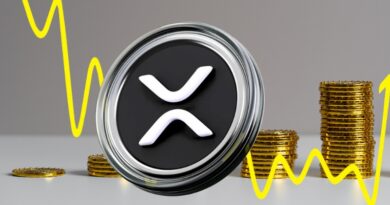BRICS+ Expansion Expected as Dozens of Nations Show Interest
Global Shift: What’s Going On with BRICS?
Have you heard about BRICS? It’s a group of five major world economies—Brazil, Russia, India, China, and South Africa—working together to offer an alternative to Western-led institutions like the IMF and World Bank.
Now, things are getting even more interesting.
A Russian senator recently shared that over 20 nations are lining up to join this powerful alliance. This growing interest could reshape how global trade and influence work, especially for countries that want options outside the U.S. dollar or Western systems.
What Is BRICS+?
BRICS+ is the expanded version of BRICS. It’s about bringing more countries in to create a larger global network. Think of it like a club that once had five members but is now looking to add many more—countries from Africa, Asia, and Latin America.
So why the sudden surge in interest?
Let’s break it down.
Why Countries Want to Join BRICS+
Many nations looking to join BRICS+ have something in common—they want more financial freedom. For decades, global finance has leaned heavily on the U.S. dollar. And that has benefits—but also limitations.
Here’s what’s drawing countries toward BRICS+:
- More control over their economy: Being part of BRICS+ may offer nations economic opportunities without relying on institutions dominated by the West.
- Fairer trade relations: Member countries hope to trade more freely, using local currencies instead of dollars, which can sometimes lead to dependence or debt.
- Political solidarity: Countries that feel sidelined by dominant powers are looking for alliances where their voices carry more weight.
A Growing Interest Across the Globe
Senator Alexei Pushkov recently said that dozens of nations have either expressed interest or are actively pursuing membership in BRICS+. And these aren’t small players. Nations like:
- Saudi Arabia
- Argentina
- United Arab Emirates
- Egypt
- Iran
They all want in—or at least are strongly considering it. If you’re wondering why this matters, think about the global energy market. Countries like Saudi Arabia and the UAE being part of BRICS+ could shake things up significantly.
Does This Mean the End of the Dollar’s Reign?
That’s a question many are asking.
While no one can deny the dollar’s dominance today, the idea behind BRICS+ is to slowly reduce that dependence. The group is exploring alternative trading systems, including new digital currencies that might bypass traditional financial networks altogether.
For example, if BRICS+ countries start using their own currencies or a shared currency for trade, that could shift how international pricing and contracts are done. Over time, this could lessen the influence of the dollar on global markets.
What Could a BRICS Currency Look Like?
There’s talk about creating a new shared currency within the BRICS+ framework.
Sounds futuristic, right?
Think of it like a modern-day euro—but for BRICS+ members. This kind of shared currency could:
- Improve trade between member nations
- Reduce transaction fees from currency conversion
- Shield member economies from global shocks tied to the dollar or euro
Of course, making a new currency isn’t simple. It needs trust, regulation, and technology. But with advancements like blockchain and central bank digital currencies (CBDCs), the idea is more than just wishful thinking.
What Makes BRICS+ Different?
You may be thinking—what makes BRICS+ any better or different than other alliances?
Here’s how it stands out:
- Equal representation: BRICS+ aims to give each member an equal seat at the table, regardless of economic size.
- Focus on development: The group wants to fund infrastructure and social development in poorer nations without attaching political strings.
- Local currency trading: Encouraging trade in home currencies adds economic stability across a diverse group of countries.
Could All This Really Work?
It’s a fair question.
Some critics say it’s difficult to manage so many different economies under one framework. Countries have different cultures, policies, languages, and goals. Bringing them all together in a smooth system is a big challenge.
But the growing interest shows there’s a real hunger for alternatives.
In many ways, this feels like the early days of the European Union. Back then, a united Europe seemed complex to pull off—but today, it’s a major economic power.
What It Means for Ordinary People
You’re probably wondering—how does this affect me?
Here are a few ways it could impact daily life over time:
- More options for travel and trade: With larger global networks, accessing international services and markets could become simpler.
- Currency diversification: If more countries trade in different currencies, people may hold savings in alternatives to the dollar.
- Stronger regional ties: Countries may form closer relationships with neighboring BRICS+ members, leading to more regional products and services.
Where Things Go from Here
This isn’t a light switch—it’s a slow build.
The true impact of a BRICS+ expansion will unfold over years, even decades. But the foundation is being laid now. With so many nations interested, change is clearly in the air.
Will we see a shift in the global order? That remains to be seen.
One thing is clear: countries want more choices, and BRICS+ is offering a different path forward.
Final Thoughts
If you’re keeping an eye on the global economy, this is a story worth watching. Whether or not BRICS+ changes the world stage forever, its expansion marks a clear demand for new financial structures and fairer global cooperation.
So what do you think—can groups like BRICS+ create a real rival to the old systems?
Time will tell. But the wheels are already turning.









